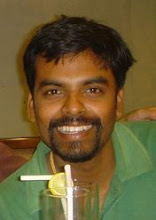- Official poverty stands at 28 per cent. Significantly, one has to appreciate that the current definition of poverty is hopelessly inadequate. It is defined on the premise of whether a person can afford to consume 2,400 calories of food in rural India or 2,100 calories of food in urban India per day. Naturally, this limited definition ignores the other bare minimum necessities required for a decent living. Obviously, if one were to consider a more realistically defined poverty line, based on the basic needs for a decent living, the number of poor in India could be far more than the officially stated figure of 30 crore (300 million).
- Literacy rate is still below 70 per cent.
- The most difficult task is to ensure good quality of instruction and the position in this respect is disturbing. A recent study found that 38 per cent of the children who have completed four years of schooling cannot read a small paragraph with short sentences meant to be read by a student of class 2. About 55 per cent of such children cannot divide a three-digit number by a one-digit number.
Drop out rate in primary schools for the country as a whole was at a staggering 31 per cent in 2003-04. - India's infant mortality rates, under-five mortality rates, maternal mortality rates and immunisation rates are higher than that of Sri Lanka, China and Vietnam.
- The biggest constraint in achieving a faster growth of manufacturing is the fact that infrastructure -- roads, railways, ports, airports, communication and electricity -- is not up to the standards prevalent in our competitor countries.
Apart from the underperformance in the social sectors, the impact of the lack of governance needs to be understood in monetary terms too. The debt of the central government stands at approximately Rs 25 lakh crore (Rs 25 trillion) as at March 31, 2007: that is, 25 followed by 12 zeroes!
What needs to be further understood is that like an individual, a government too can borrow -- provided it has corresponding assets. It may be noted that the foreign debt comprised within this overall debt is still computed at historical costs (when the exchange rate was say Rs 16 per US $), thereby suppressing the aggregate by trillions of rupees.
Secondly, what is indeed appalling is that the government concedes that it has a liability aggregating to Rs 12 lakh crore (Rs 12 trillion) without corresponding assets. Finally, for the balance assets, no provision is made for depreciation. Net of depreciation, this figure would be even more abysmal. All these are further manifestations of our mis-governance.
Needless to emphasise, if this is the position of the central government, one can imagine the financial position of the state governments. The interest bill coupled with the salary burden has a debilitating impact on the finances of the State. Even a 'progressive' state government like Tamil Nadu spends approximately 70 per cent -- yes, 70 per cent -- of its revenues on the salary of its employees.
If salary were to be such a high proportion of the total revenues, there is hardly any sum available for development, which in turn depends on fresh borrowings. For the benefit of a mere 2 per cent of the population, the rest are taxed and in the name of government, we continue to suffer this absurdity silently.
It would appear that the government exists not for the greater good of the greater number, but greater good of its own employees. Such a model is purely unsustainable.
Source - rediff.com; Mr. M.R. Venkatesh.





No comments:
Post a Comment